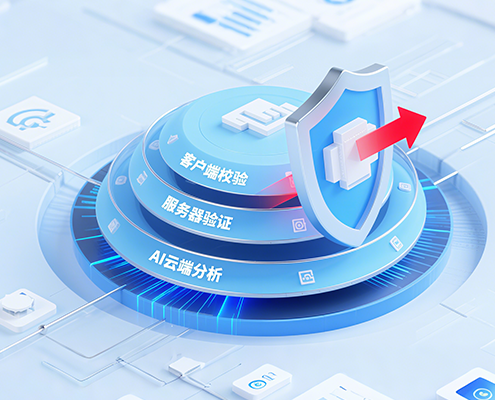Multimodal data fusion and deep insights
In the future, AI anti cheat systems will no longer be limited to analyzing a single type of data, but will comprehensively integrate player operation behavior, game status, device environment, and even multimodal data such as voice chat and facial expressions. By using cross modal deep learning algorithms, construct more three-dimensional and accurate player behavior portraits. For example, in shooting games, combining the player’s voice command with actual tactical actions, if the voice mentions going to a certain location, but the actual action instantly appears in another location, accompanied by extraordinary movement speed, this multimodal data conflict will be keenly captured by the system, greatly improving the recognition ability of external camouflage behavior.
Reinforcement learning and adaptive adversarial learning
Cheat developers constantly adjust their cheating strategies to evade detection, and AI anti cheat technology will use reinforcement learning to achieve adaptive countermeasures. The system is like an intelligent gamer, constantly trying new detection strategies and optimizing its own behavior based on feedback results in continuous confrontation with external cheats. When encountering new variant cheats, the system automatically generates multiple detection schemes to tentatively intervene in suspected cheating behavior. Based on the reaction of the cheater, its characteristics and weaknesses are judged, and the detection model is quickly adjusted to make it difficult for the cheater to hide for a long time. This dynamic adaptive capability will break the lag of traditional anti cheating technology and always maintain a high-pressure situation against cheating behavior.
Federated Learning and Industry Collaboration
Different game developers have their own rich player behavior data, but due to limitations in data privacy and competition barriers, the data is difficult to share. The application of federated learning technology will change this situation, as game developers jointly train AI anti cheat models without exchanging raw data. By sharing model parameters and integrating cheating behavior characteristics within the industry, a wider and more universal anti cheating model is constructed. In this way, a new type of cheating tool that has just emerged in the cheating market, regardless of which game it appears in, can quickly be learned and prevented by the anti cheating systems of other games, forming a new situation of industry wide collaborative anti cheating.
Quantum security and encryption protection upgrade
With the development of quantum computing technology, existing encryption algorithms are facing the risk of being cracked, which poses a huge threat to data security in external protection. In the future, AI anti cheating technology will actively introduce quantum secure encryption algorithms, such as encryption schemes based on quantum key distribution (QKD), to ensure absolute security of player behavior data during transmission and storage. At the same time, more complex encryption obfuscation techniques are used for the core code and key data of the game. Even if cheats obtain some data, they can only obtain unreadable garbled code, which fundamentally blocks the way for cheats to cheat through data theft and tampering.
Biometric recognition fusion
To further confirm the true identity of players and prevent account sharing and cheating, the AI anti cheat system will integrate biometric recognition technology. For example, in the login process, facial recognition, fingerprint recognition, and even more advanced technologies such as iris recognition and vein recognition are introduced to ensure that the main operator of the game is the account owner themselves. By double verifying biometric and player behavior data, the cheating threshold is significantly increased, making it difficult for cheating users to cheat by impersonating someone else’s account. In high-end esports events, this precise identity verification method will become a key defense line to ensure fairness in competition.
Real time prediction and active defense
Traditional anti cheating methods are mostly retrospective, but in the future, AI anti cheating will have real-time prediction capabilities. By conducting in-depth analysis of massive historical cheating data and real-time behavioral data, a risk prediction model is established to anticipate potential cheating tendencies of players in advance. Once an abnormal behavior trend is detected, the system immediately activates proactive defense mechanisms, such as restricting players’ partial operation permissions, adding verification links, etc., to nip cheating behavior in the bud, rather than waiting until cheating behavior actually occurs before taking action, effectively reducing the degree of damage cheating causes to game fairness.
Cross platform and cross game linkage
Nowadays, players frequently switch between multiple platforms and games, and cheating developers are also trying to create universal cheating tools. AI anti cheating technology will develop towards cross platform and cross game linkage, establishing a unified anti cheating data standard and interface specification. Whether players are playing on PC, console, or mobile devices, and whether they are participating in shooting, MOBA, or role-playing games, the anti cheat system can seamlessly integrate and share behavior data and detection results. When a player is marked for cheating in a game, their relevant information will be synchronized to other game platforms, achieving comprehensive and blind spot anti cheating supervision.

Service Hotline:
400-8888-1234
Service Time:
8:00–20:00
email:
test@aifwg.com
AI anti cheat:
AI anti cheating is the use of artificial intelligence technology, such as big data analysis and machine learning, to detect and prevent cheating behavior in games. Compared with traditional anti cheating measures, ESP-AI anti cheating has higher accuracy and real-time performance. It can monitor player behavior in real-time, detect abnormal patterns and respond quickly, effectively ensuring the fairness of the game.
ADDRESS:
- Qingdao: Jintan Road, Shinan District
- Jinan: Qilu Software Park, High tech Zone
- Yantai: Sunshine 100 city square, No. 25, Haigang Road
- Zibo: China Resources Building, No. 68, Jinjing Avenue, Zhangdian District
NAVIGITION:
Follow Us

Copyright © 2020-2025 aifwg.COM all rights reserved
鲁ICP备2021011263号-27



